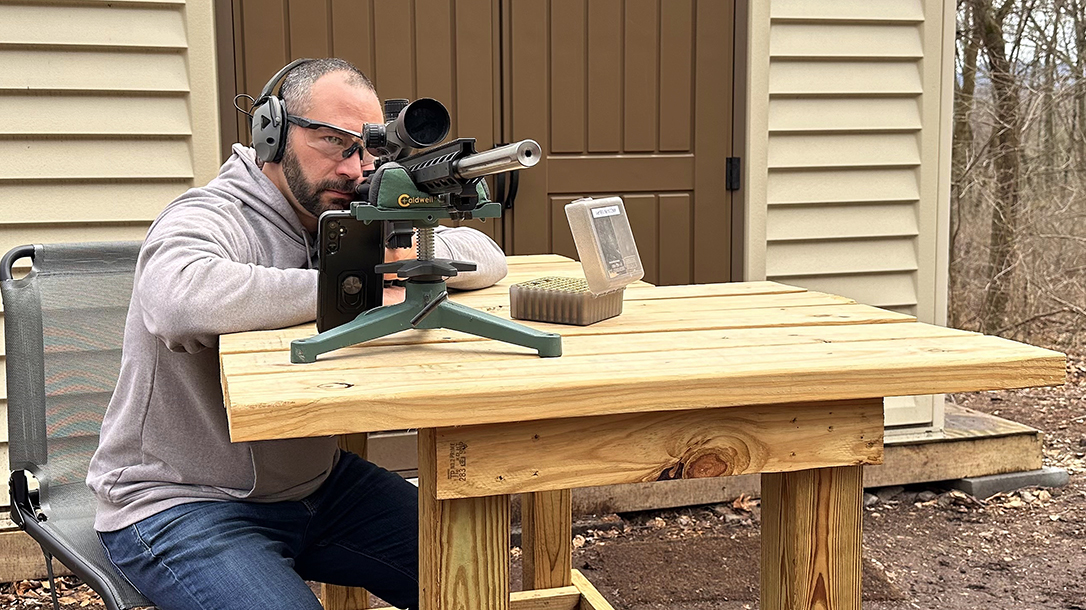As far as precision shooting is concerned, life is much easier when you marry your rifle to a single round. Nothing is worse than keeping two different dope books or trying to develop a feel for wind with two different loads, let alone source components to build both cartridges. It’s a simple solution, just as long as you’re ok with that rifle serving a solemn role. The problem with going this route is that you leave a lot of money on the table, as rifles that are well-suited for shooting matches are also typically excellent varmint guns. The projectiles involved in each sport are radically different from one another, as one is built for speed, and the other is made to buck the wind, typically through increased mass. Blending the two concepts, Hornady came out with the ELD-VT (eXtremely Low Drag – Varmint Target) product line.
Hornady ELD-VT
We got to test it out at last year’s Athlon Outdoors Rendezvous, sending some downrange via the new .22 ARC cartridge. I wanted in its use in some of the rounds that had been on the market for a little longer, so I started my investigation.
When I got home and had time to skim the entire line, I was able to dive a little deeper into this bullet family. Seeing some pulled from their cases helped a great deal, too. Their profiles mimic today’s lowest drag pills, even to match or exceed the length of heavier offerings of the caliber. However, due to their thinner jacket, hollow cavity, and overall sleekness, they tip the scale at a much lower weight. For reference, the 62-grain .224-inch projectile is longer than the same diameter boattail hollow point pill despite being 13 grains lighter. Together, these qualities add up to faster speeds while beating the wind better on extended engagements.
Like everything else, anything great comes at the expense of something else. All of that length means they’ll only reach full potential in modern cartridges that can accommodate the longer ogives, or at least magazines that allow for greater overall length. Think 6 Creedmoor instead of .243 Winchester or 22 ARC instead of .223 Remington. Now, I’m not saying you can’t load these into old standbys; I’m just saying that a whole lot of bullets will be sitting outside of the case and might not fit into a mag. You might experience chambering issues, too, if your rifle doesn’t have enough free bore, but in most cases, you can adjust around that.
ELD-VT Terminal Performance
Let’s talk terminal performance, as that’s where a varmint bullet shines. Being that these feature the same Heat Shield tips as the rest of the ELD family, they’ll arrive on target without suffering the deformation associated with other polymers when they heat up mid-flight. This also serves as part of the expansion recipe, as it gets driven into the hollow cavity upon impact. Being that the cavity is comprised of a thinner copper jacket than that of a match bullet, it fragments much easier and with less influence, making it explosive on thinner, softer targets. Lastly, the entire line falls into either the light or midweight caliber spectrum, giving the handloader the ability to drive them to incredible speeds, cranking the aforementioned qualities to an eleven.
Always game for a reloading project, I was excited when the assignment came across my desk. With pills available for the most common calibers, I told Hornady to send me their first available, and I’d cook something up. As I might have guessed, it was the 62-grain .224-inch, as they were churning these out to meet the .22 ARC demand that came with the introduction of the new product family. With a BC of .395, it’s ballistically superior to all other 62- and 68-grain bullets Hornady makes while even giving some of the 73s and 75s a run for their money.
The only downside to receiving these was that I did not yet have a rifle chambered in .22 ARC, nor any other .224-inch hot rods on hand. I did, however, have a superbly accurate bull-barrel AR-15, so I decided to go 5.56 with this project. At the same time, I figured I’d keep engineering honest and see if there was any feasible way to make these fit into a standard magazine.
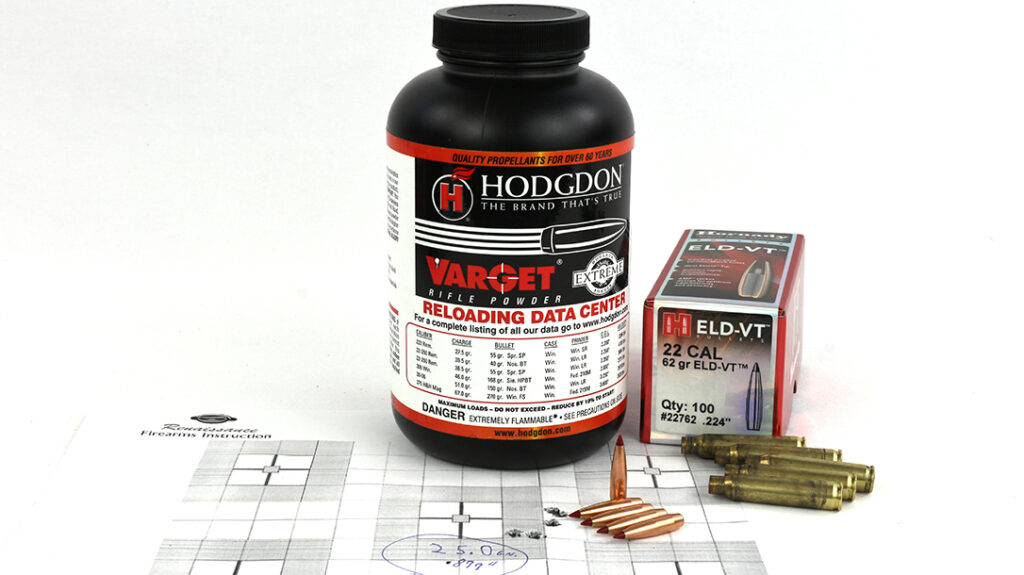
Loading for 5.56 AR-15s
There are several powders that work great with 5.56; it just comes down to what weight bullet you plan on running. That’s where things get interesting, as the ELD-VTs are lightweight but fill the bore like they’re much heavier. Therefore, I leaned toward my favorite powder for heavy .224-inch pills in 5.56, which is Hodgdon Varget. Although faster velocities are listed with other powders, I was confident that my 24-inch barrel would be an equalizer, and using Varget ensured temperature stability and time-tested consistency for me. I was able to find published load data for this propellant in both 62- and 75-grain loads, so that also helped me confirm that my choice would be safe. To ensure that I wouldn’t experience an overpressure event, I selected the more conservative powder range and moved on to the rest of the components.
Years ago, I conducted most of my testing in an Air National Guard training range. Therefore, I have buckets of Lake City 5.56 brass on hand. With the quantity that I’ve collected, I was able to sort it not only by head stamp but also within a grain of each other. To that end, these lots that I have are more consistent than anything you can buy off the shelf and, I admit perhaps a touch sentimental. With a full match prep in the rearview, all that was left was to prime them with benchrest-grade CCI BR-2 primers and head to my state-of-the-art research facility, which resembles a shed deep in the woods.
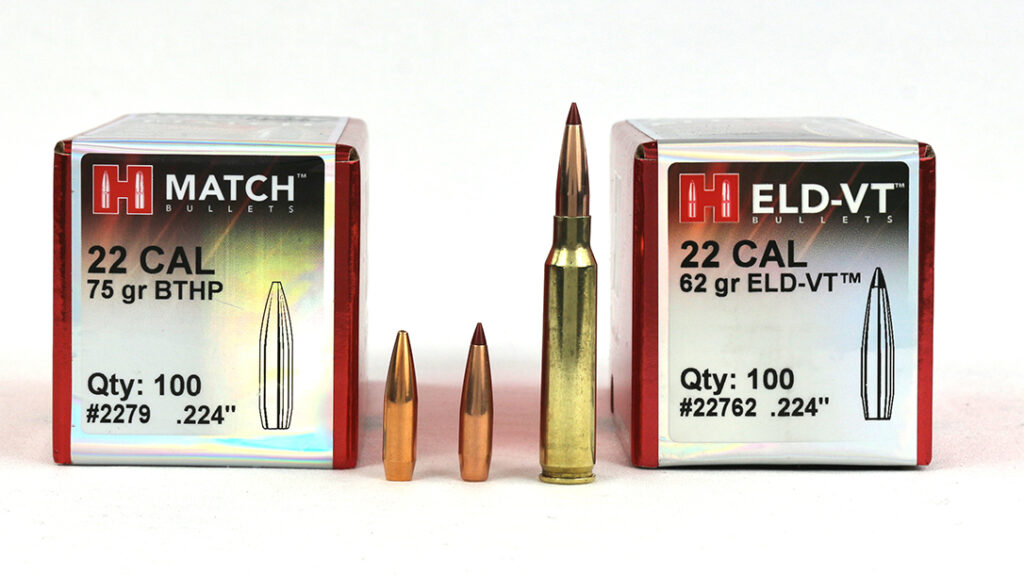
Z
Starting with a charge of 23.5 grains of Varget, I sat a bullet in small increments to see if I could squeeze it into a magazine. Using a Duramag afforded me a few extra thousandths, but even that was of no help. To get the round down to 2.260 inches, it would have to be sat below the Ogive, nearly falling into the case. The surface problem with this is obvious, as the rifle won’t feed, and you’ll have erratic or dangerous pressure levels. However, if that’s not enough to sway you, remember that you’ll lose a tremendous amount of powder capacity doing this. Lastly, seating below the shoulder/neck junction introduces additional and variable neck tension.
With that said, I tossed this round and created another at a more comfortable length of 2.480 and confirmed that it would chamber. After rolling off another four, I warmed the rifle up and punched my first group. I’m not a lucky man, so when my first four shots measured less than half MOA, I was pretty excited. The fifth shot left the cluster but still yielded a 100-yard croup that measured .623-inch, letting me know that these were certainly going to be accurate. In most load development projects, I would have stopped right there. However, Hornady built these bullets for speed, and 2,700 feet per second isn’t particularly fast for 5.56.
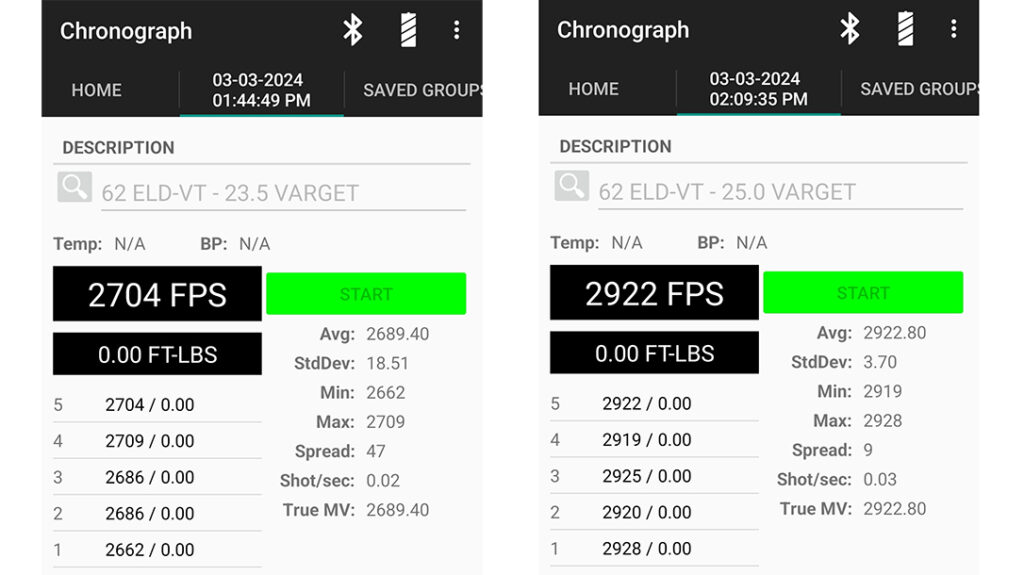
Need for Speed
To that end, I worked through the spectrum in half-grain increments and hit 2,928 fps at 25.0 grains, which is just about all the powder these cases can hold. The group measured .899-inch, beating the sub-MOA benchmark while exhibiting a standard deviation of just 3.7 and an extreme spread of 9. It’s a good thing I took a screenshot of the chronograph; otherwise, people wouldn’t believe it! Satisfied with both loads, I determined it best to call it a day.
Hornady’s ELD-VT met its promise and produced excellent accuracy and consistency, even in a cartridge built for something else. Although I still need to test it out on flesh, the borrowed V-Max technology proved itself over decades. So I believe it will become a grenade the minute it touches fur. Overall, I think this very well could be the only bullet you need to load in your precision rifles, so now it’s just a matter of measuring more powder and stockpiling some ammo!
Hornady Click-Adjust Micrometer
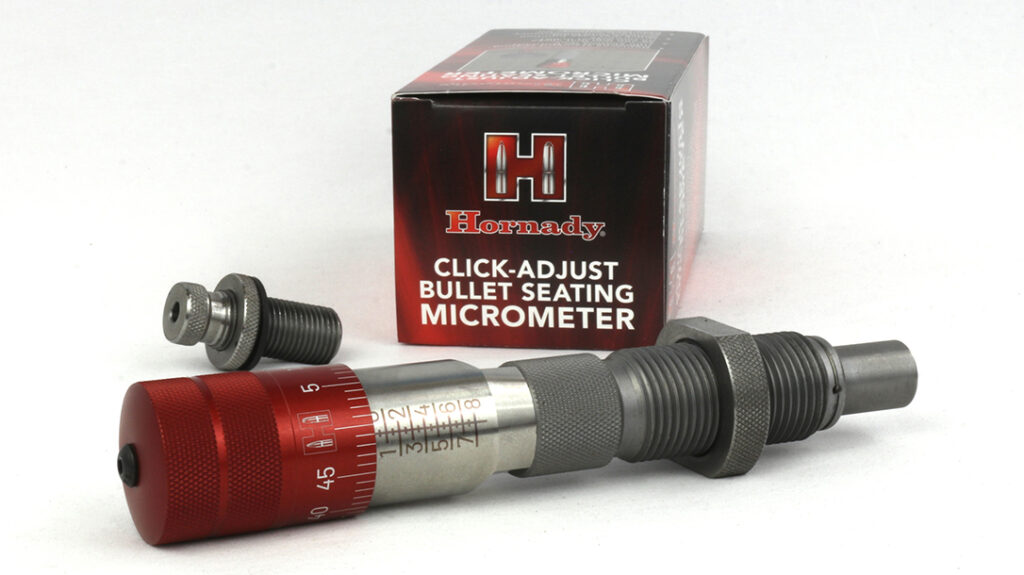
One of the advantages that the handloader has is being able to tailor seating depth for top performance or even functionality. I used Hornady’s new click-adjust bullet seating micrometer to develop the loads in this piece. It offers a tactile feel and a positive adjustment down to the thousandth. Upgrading your dies is as simple as twisting off the standard seater plug and replacing it with this tool.
V-Match Ammo Family
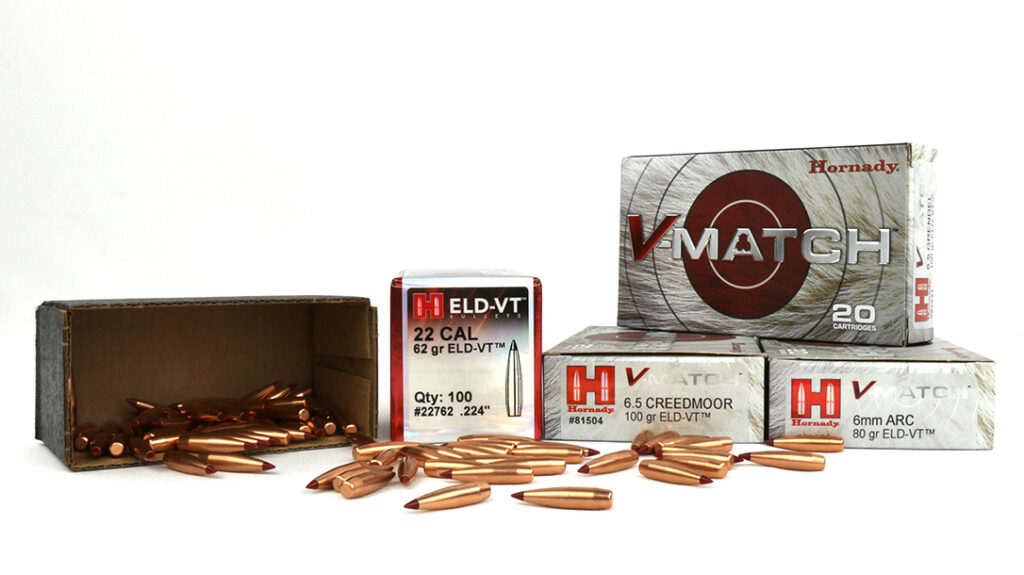
Want to shoot the ELD-VTs but not into rolling your own rounds? No problem, Hornady offers them in their new V-Match line of ammunition. Initial loadings are in 6 or 22 ARC, 6 or 6.5 Creedmoor, and even 6.5 Grendel. Each cartridge utilizes match-grade brass and a carefully selected powder charge to drive each to peak velocity. Nothing is simpler than grabbing a case at a local gun store and hitting a prairie dog town running.
For more info, visit hornady.com.



Didn’t find what you were looking for?
Read the full article here

